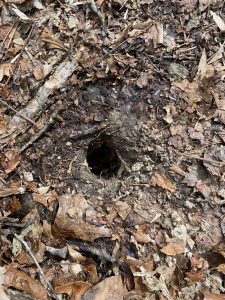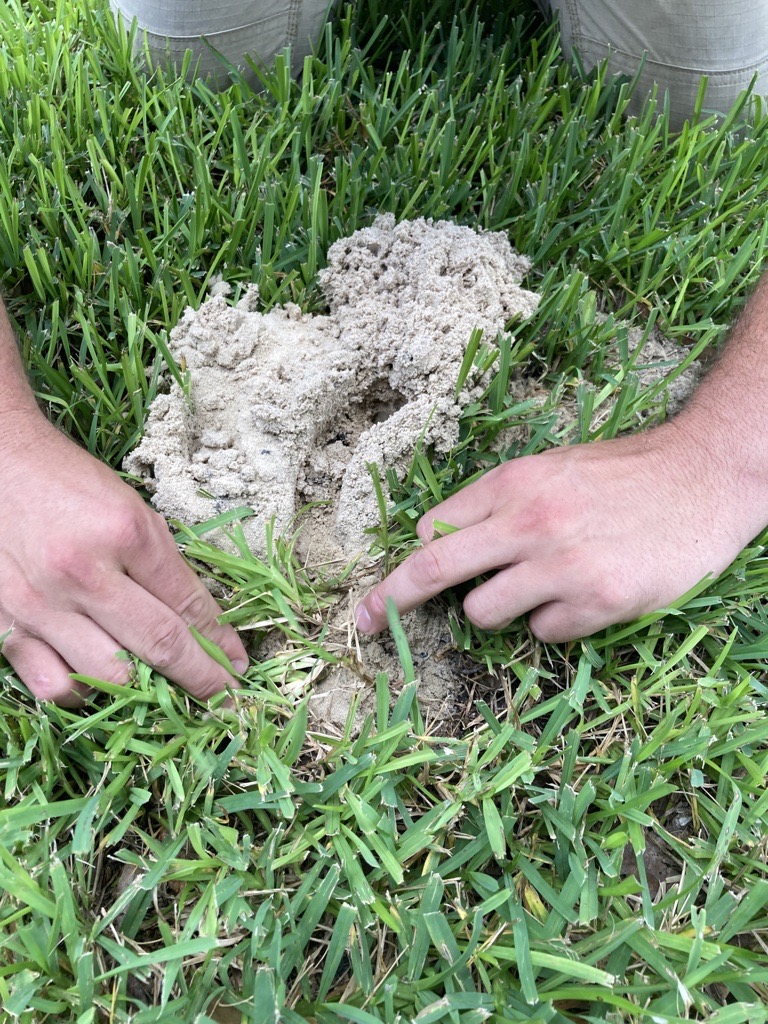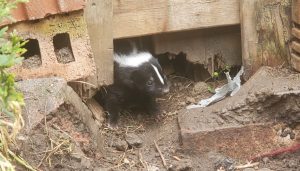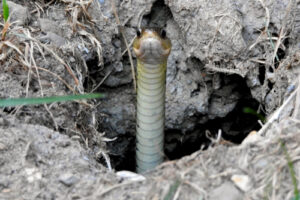Burrowing animals can turn even the most aesthetic lawns into a pockmarked disaster. When this happens, you’ll need to patch up your lawn. Different animals create different kinds of holes, and naturally, different approaches are needed to fix them.
Animal Holes by Species
How to Fill Chipmunk Holes

Chipmunk holes are 2-3 inches wide, with no soil around them, as chipmunks collect soil in their cheeks while digging. For a quick fix, get some potting soil and fill up the hole with a trowel to where it is level with the ground, then tamp it down with your foot. To make sure that they can’t dig in that spot again, mix 3 parts gravel with 1 part soil to make it more difficult for chipmunks to dig.
How to Fill Mole Holes

Moles spend the vast majority of their lives tunneling underground, and when they emerge above ground it is typically by accident when their tunnels are too shallow. The mounds of dirt you might see on your lawn are actually from underground moles pushing dirt upward as they search for insects.
The good thing about mole hills is that they will go away on their own over time. But if the hills bother you, get a rake or shovel and redistribute the dirt. If done promptly, this can save the grass below. Similarly, you can flatten mole tunnels with your foot if you like, but they’ll go away on their own sooner or later.
How to Fill Gopher Holes

While gopher holes are small, gophers themselves can do tremendous amounts of damage to your garden by burrowing underneath it and feeding on the roots of various plants. Here are a few methods to fill gopher holes and send a clear message that they aren’t welcome:
Use expanding soil. Expanding soil is a compressed, nutrient-rich material that grows when watered. To use it, first locate any and all gopher holes in your yard, break the compressed soil into parts, and plug it into the hole. Add a little water and it should expand to completely fill the hole.
Use peppermint. Like many burrowing animals, Gophers loathe the smell of peppermint. You can combine expanding soil with peppermint oil or spray for added effectiveness.
Fill it with kitty litter. You can also mix it with expanding soil. One small caveat: the kitty litter should be used. Sounds disgusting, but you’ll get results. The smell of a predator’s waste is one of the most effective deterrents for a wide variety of animals.
How to Fill Groundhog Holes
Groundhogs, or woodchucks, can ravage your yard with their incessant digging. But before you go about plugging up their holes, you should make sure their burrows are empty. It’s best to plug groundhog holes in late summer or early fall when the burrows are empty and you don’t risk trapping them inside—otherwise, the trapped groundhog will probably just dig a new tunnel to get out, potentially causing more damage than before.
Fill the holes with topsoil, sand, or gravel, tamping the soil to pack it down firmly. If using topsoil, spread grass seed over it to encourage the regrowth of grass. If you simply want to ensure that the groundhogs don’t return, place large stones over the tunnel openings.
How to Fill Skunk Holes

There are two types of skunk holes. Skunks will dig shallow holes in your yard looking for insects to eat. They will also dig bigger holes to create dens.
Use top soil to fill in the shallow skunk holes in your yard. Be cautious approaching a skunk den.
Before filling in a den, you should determine if it’s occupied or not. Do this by loosely filling the holes with soil, straw, or leaves. Come back the next day; if a skunk is present, they will have cleared this debris out.
But if the hole remains undisturbed for several days, it’s safe to assume it is vacant and fill it. To fill a skunk hole, simply pack it full of dirt or gravel. For added protection, cover the hole with a wire mesh.
How to Fill Snake Holes

Snakes can be beneficial to have around your property, as they prey on crickets, worms, cockroaches, and even small rodents like rats and mice. If you find a snake hole on your property, consider leaving it be, since it was most likely created by a non-venomous snake that is working to keep pests in check. But if snakes begin to pose a threat to your pets or family, filling their holes can get them to stay away.
The key point to remember when filling snake holes is to not pile up material, as this will only encourage the snake to nest there again. Fill them with dirt or cover them with netting, wire, or burlap, making sure the filling or covering is flat or as level as possible with the ground.
How to Prevent Raccoon Holes

Raccoons aren’t burrowing animals, but they often dig holes in the ground in search of grubs or other insects, which comprise a major part of their diet. There are a few things you can use to prevent this:
Grub killer. Raccoons won’t be very interested in a grubless yard. Appropriate use of grub killers can keep your yard free from them for a few years.
Garden bird netting. Procure inexpensive bird netting from your local hardware store and pin it over the ground. This method takes time and work, but if you leave it on your lawn for a couple weeks, it will encourage the raccoons to go elsewhere.
Professional Animal Control in the Yard
Filling animal holes can restore your lawn to its previous state, but unless the animals themselves are trapped and removed, it’s all too likely you’ll find holes in your yard again. Animals have identified available resources on your property. Eliminating those resources via habitat modifications you can make to ensure your yard is less hospitable to wildlife.
But if the pest animals are well established, filling in the holes won’t solve the problem.
Call a Trutech Wildlife professional about your animal control situation. Our team will work around your schedule to deal with nuisance animals in a prompt and humane manner.



